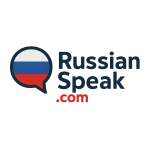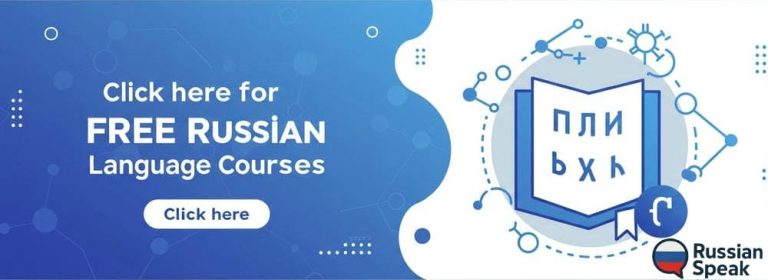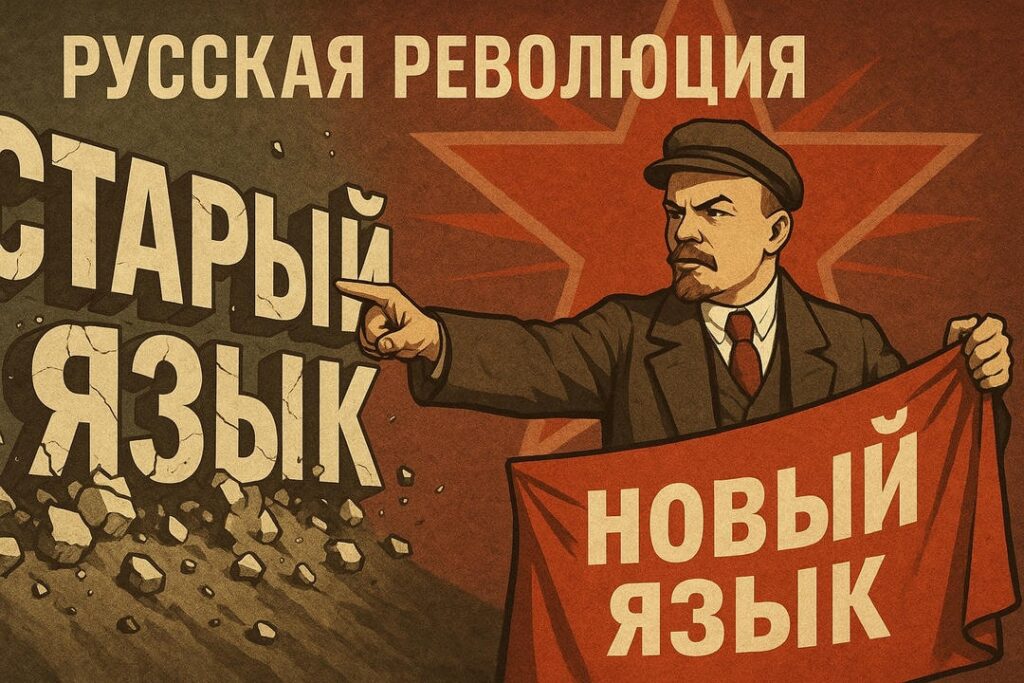The Russian Revolution of 1917 catalyzed a profound transformation in language and expression. This upheaval birthed a unique revolutionary lexicon that democratized complex ideas, enabling broader societal engagement. New terms and slogans articulated socialist ideals, reshaping literature and fostering an urgent stylistic shift. The role of propaganda further amplified these changes, establishing a cohesive ideological framework. As these linguistic innovations took root, they raised questions about their enduring impact on contemporary discourse.
Table of Contents
ToggleThe Rise of Revolutionary Language

The Russian Revolution of 1917 was a time of great change, not just in politics and society but also in language. As Russia moved toward a new future, a fresh way of speaking developed that reflected the hopes and dreams of many people across the country.
This new language was full of energy and spirit, designed to bring people together and express ideas of fairness, equality, and a better life for everyone. It introduced new words and phrases that helped explain these ideas clearly and simply to all kinds of people.
One important part of this language was the use of slogans—short, powerful phrases that were easy to remember and understand. For example, the slogan “All power to the Soviets!” (Russian: «Вся власть Советам!» — Vsya vlast’ Sovetam!) became a popular way to encourage cooperation and unity among workers, farmers, and soldiers.
The language also introduced important words to describe different groups in society. The word “proletariat” (Russian: «пролетариат» — prole-tar-ee-AT) referred to the working people who were seen as the heart of the nation’s strength. The word “bourgeoisie” (Russian: «буржуазия» — bur-zhoo-AH-zee-ya) described the older social classes that were being replaced by new opportunities for everyone. A warm word like “comrade” (Russian: «товарищ» — to-va-REESH) was used instead of formal titles, showing respect and friendship between all people.
This fresh language was easy for everyone to understand, even those who had little schooling. Newspapers, posters, and speeches used simple words so that important ideas could reach every corner of the country. This helped people feel included and excited about working together for a better future.
The changes in language also showed a new way of thinking—one based on equality and respect for everyone. Over time, this way of speaking became part of everyday life in Russia and shaped the culture for many years to come.
In short, the rise of revolutionary language during this time was an important step in Russia’s journey toward unity and progress. It brought people closer together, helped share hopeful ideas, and left a lasting positive mark on Russian language and culture.
The Impact on Poetry and Prose in Russia
The Russian Revolution of 1917 was a monumental event that not only reshaped the political and social landscape of Russia but also had a profound impact on its literature, especially poetry and prose. This period marked a dramatic shift in how writers expressed themselves, reflecting the intense emotions, ideas, and upheaval of the time.
Before the revolution, Russian literature was often dominated by romanticism and idealized depictions of life. However, the revolution brought a wave of realism and urgency. Writers and poets began to explore themes of struggle (борьба, bor’ba), hope (надежда, nadezhda), and the quest for a new society (новое общество, novoye obshchestvo). The creative energy of this era was fueled by the desire to capture both the pain of change and the optimism for the future.
One of the most notable impacts was the use of symbolism (символизм, simvolizm) connected to revolutionary ideas. Poets like Vladimir Mayakovsky (Владимир Маяковский) used bold imagery and innovative language to inspire people. His work combined the power of propaganda with genuine artistic creativity, making poetry a tool for social change. The phrase “Пролетарии всех стран, соединяйтесь!” (Proletarii vsekh stran, soyedinyaytes!), meaning “Workers of the world, unite!”, became a powerful slogan embedded in literature and everyday speech.
Prose writers also shifted their focus. They moved away from escapist stories to those that depicted the everyday realities of life under the new regime. Writers like Maxim Gorky (Максим Горький) portrayed the struggles of ordinary people with empathy and honesty. This approach helped readers see literature as a mirror reflecting their own experiences and aspirations.
The language itself evolved:
- The usage of simple, direct words became common to reach a wider audience.
- New words and phrases related to politics and social change entered everyday language, such as революция (revolyutsiya – revolution), пролетариат (proletariat – working class), and коммунизм (kommunizm – communism).
- The style became more accessible, moving away from ornate classical forms to straightforward communication.
Poetry became not just art but a form of activism. It expressed the collective voice of hope, sacrifice, and determination. The emotional intensity found in poems often captured the spirit of the people better than political speeches or historical accounts.
To summarize the changes in Russian poetry and prose after the revolution:
- Themes: Shift from romantic idealism to realism and social issues.
- Language: More direct, simple, and accessible vocabulary.
- Style: Innovative forms like futurism mixed with political symbolism.
- Purpose: Literature as a tool for social change and expression of collective hopes.
- Notable figures: Vladimir Mayakovsky (poet), Maxim Gorky (prose writer).
This transformation made literature an essential part of understanding the revolutionary era. It helped people process their experiences and envision a new future, making poetry and prose powerful vehicles for cultural and political change in Russia.
![]()
Key Russian words and phrases:
- Революция (revolyutsiya) – Revolution
- Поэзия (poeziya) – Poetry
- Проза (proza) – Prose
- Борьба (bor’ba) – Struggle
- Надежда (nadezhda) – Hope
- Символизм (simvolizm) – Symbolism
- Пролетариат (proletariat) – Working class
- Коммунизм (kommunizm) – Communism
- Новое общество (novoye obshchestvo) – New society
These words will help you understand discussions about this important period in Russian literature and history.
New Ideologies and Their Linguistic Expressions
The Russian Revolution marked a pivotal moment not only in political and social history but also in the evolution of language. The rise of new ideologies during this period brought profound changes to linguistic expressions, as language became an essential tool for communicating revolutionary ideals and reshaping social consciousness.
After 1917, Russian society underwent a radical transformation that was reflected in the way people spoke, wrote, and thought about the world. Language was deliberately used to challenge the old order and to promote new values such as equality (равенство), solidarity (солидарность), and collective identity (коллективная идентичность). This linguistic shift was more than just a change in vocabulary; it was a cultural revolution that helped to reframe people’s understanding of their role in society.
One of the most notable features of this period was the creation and widespread adoption of neologisms—new words designed to capture revolutionary concepts. Traditional words were redefined or repurposed to fit the ideological framework of Marxism-Leninism. For example, the term “пролетариат” (proletariat) became central to discourse, symbolizing the working class as the driving force of history. Alongside this came phrases like “классовая борьба” (class struggle), which encapsulated the struggle between social classes as a key historical process.
Language also embraced terms that reflected the new social relations and camaraderie among revolutionaries. Words such as “товарищ” (comrade) replaced more hierarchical forms of address, emphasizing equality and fraternity among party members and supporters. The use of “товарищ” extended beyond formal settings into everyday interactions, reinforcing a sense of unity and collective purpose.
The linguistic changes following the revolution served multiple purposes:
- Unification: By using common revolutionary terms, diverse groups across Russia could identify with shared ideals, reducing regional or ethnic differences.
- Mobilization: Propaganda and political speeches employed powerful language to inspire action and commitment to the cause.
- Education: New terminology helped spread Marxist ideology through schools, newspapers, and literature.
- Control of narrative: Reframing traditional words allowed the regime to control how history and society were understood.
Key Russian terms from this era include:
- Революция (Revolyutsiya) – Revolution
- Совет (Sovet) – Council, referring to workers’ and soldiers’ councils that played a key role in governance
- Коммунизм (Kommunizm) – Communism
- Партийный актив (Partiynyy aktiv) – Party activists or cadres
- Новая экономическая политика (Novaya ekonomicheskaya politika) – New Economic Policy, introduced in the 1920s
This linguistic transformation also influenced other languages and political movements worldwide, as revolutionary Russia became a model for socialist rhetoric. The terminology developed during this period remains foundational in discussions of socialism and communism today.
In sum, the revolution’s ideological upheavals reshaped language into a dynamic instrument for expressing new political realities. It enabled people not only to communicate revolutionary ideas but also to live them through everyday speech, thus embedding ideology into the fabric of society.
The Role of Propaganda in Shaping Language
The Russian Revolution was not only a turning point in history but also a profound moment in the evolution of the Russian language. One of the key factors in this linguistic transformation was the strategic use of propaganda, which played an essential role in shaping how people communicated, thought, and understood their world.
Propaganda during this time used powerful techniques such as repetition and emotional appeal to create a shared vocabulary that united people across diverse backgrounds. Words like “пролетариат” (proletariat) and “буржуазия” (bourgeoisie) were given fresh, meaningful connotations that fostered a collective identity among the population. This new vocabulary helped people feel part of a larger social mission and inspired hope for a better future.
Far beyond simply reflecting political changes, this linguistic shift served as an active instrument in guiding public thought and behavior. By carefully choosing and redefining words, revolutionary leaders established a narrative that explained and supported the changes taking place. This narrative shaped culture by embedding ideals and values into everyday language, making them accessible and memorable for all.
For learners of Russian today, understanding this historical context enriches knowledge of the language itself. It reveals how Russian is not just a means of communication but also a mirror of its people’s resilience, creativity, and spirit. Some other key terms that emerged or gained prominence include:
- Революция (Revolyutsiya) – Revolution: symbolizing dramatic social transformation.
- Свобода (Svoboda) – Freedom: capturing the aspiration for liberty and self-determination.
- Солидарность (Solidarnost’) – Solidarity: expressing unity and mutual support among people.
Exploring these terms highlights how language can carry deep cultural significance, reflecting both historical experiences and shared hopes. The Russian language, shaped through events like the Revolution, continues to be a vibrant vehicle for expressing identity, history, and values — inviting learners to connect with Russia’s rich heritage on many levels.
Artistic Movements Born from a Time of Great Change in Russia
The period following the Russian Revolution was marked by incredible energy and transformation, not only in politics but also in culture and art. Out of this time of change came innovative artistic movements that captured the spirit of a society looking forward to a new future.
Avant-garde movements such as Конструктивизм (Constructivism) and Супрематизм (Suprematism) emerged as bold cultural responses to the rapidly evolving world around them. These movements broke away from traditional artistic forms, embracing innovation, simplicity, and new ways of seeing. Artists believed that art could be a powerful force to inspire progress and reflect the revolutionary ideals sweeping through Russian society.
This era was also characterized by exciting experimentation, blending different styles and techniques. Artists explored abstraction and new materials to express the energy and complexity of their times. Their works captured the sense of possibility, movement, and transformation that defined this historic moment.
Beyond individual creativity, these artistic movements became a collective voice for freedom, renewal, and hope for a brighter society. They embodied the revolutionary spirit not just in words but through visual language — offering a vibrant expression of Russia’s cultural strength and resilience.
For those learning about Russian culture and language, understanding this artistic legacy adds depth to appreciation of Russia’s rich heritage. Some key Russian terms related to this artistic period include:
- Авангард (Avangard) – Avant-garde: representing the forefront of innovation in art.
- Абстракция (Abstraktsiya) – Abstraction: referring to art that moves beyond realistic representation.
- Революция (Revolyutsiya) – Revolution: the profound social change that inspired new forms of creativity.
These ideas reflect how Russian art during this period was deeply connected to history and cultural identity, inviting learners to see how language and creativity intertwine in shaping a nation’s story.
Key Artists and Works from Russian Avant-Garde Movements
Here are some of the most influential artists and their works that shaped the Russian avant-garde during and after the Revolution, illustrating how creativity and history came together:
1. Казимир Малевич (Kazimir Malevich)
- Movement: Suprematism (Супрематизм)
- Notable Work: Чёрный квадрат (Black Square, 1915)
Malevich’s Black Square is one of the most famous pieces of abstract art in history. It symbolizes a break from traditional representational art, focusing on pure geometric form to express new spiritual and artistic ideas. This painting became a cornerstone of Suprematism, which emphasized basic shapes and colors to convey emotion and thought beyond the visible world.
2. Владимир Татлин (Vladimir Tatlin)
- Movement: Constructivism (Конструктивизм)
- Notable Work: Башня Татлина (Tatlin’s Tower, 1919–1920)
Tatlin’s Tower, also known as the Monument to the Third International, was an ambitious architectural design meant to symbolize the new socialist society rising from the old. Although never built, it remains a powerful icon of Constructivism, which combined art with engineering and industrial materials to serve practical and ideological purposes.
3. Александр Родченко (Alexander Rodchenko)
- Movement: Constructivism (Конструктивизм)
- Notable Work: Photomontages and graphic design
Rodchenko was a pioneering graphic artist and photographer who used bold angles, dynamic compositions, and photomontage techniques to communicate revolutionary messages. His work helped define modern visual communication in Russia, blending art with political and social content.
4. Эль Лисицкий (El Lissitzky)
- Movement: Suprematism and Constructivism
- Notable Work: ПРУН (PROUN series)
Lissitzky’s PROUN works fused painting and architecture, exploring spatial relationships through geometric abstraction. He also designed impactful propaganda posters that combined art with clear messages supporting social transformation, reflecting the role of graphic design in shaping public consciousness.
Why This Matters for Learners of Russian Culture and Language
These artists and their works demonstrate how Russian culture embraced innovation while reflecting its unique historical context. The vocabulary related to these movements—words like авангард (avant-garde), конструктивизм (constructivism), and абстракция (abstraction)—are not only useful for understanding art but also reveal how language evolves alongside culture and history.
Exploring these artistic achievements offers learners a window into Russia’s rich creative spirit, inspiring appreciation for the language and its connection to a vibrant cultural past.
The Influence of the Revolution on Soviet Literature

The Russian Revolution of 1917 was not only a political turning point but also a profound cultural and artistic transformation. For anyone learning the Russian language and exploring its rich cultural heritage, understanding how this historic event shaped Soviet literature offers valuable insight into the spirit of the era and the evolution of Russian storytelling.
A New Literary Landscape
The revolution sparked a dramatic shift in literature, reflecting the hopes, struggles, and dreams of a society undergoing rapid change. One of the most important movements that emerged was social realism. This style focused on portraying everyday life, especially the experiences of the working class and peasants, with honesty and empathy. Through social realism, writers captured both the challenges and triumphs of ordinary people, making literature more accessible and relevant to a wider audience.
At the same time, the early Soviet period was marked by vibrant avant-garde experimentation. Writers and poets explored innovative forms, styles, and ideas, blending artistic freedom with revolutionary optimism. This blend created a unique literary atmosphere where bold creativity met social purpose, allowing readers to experience both traditional narratives and cutting-edge works.
Exploring Identity during Change
The revolution was also a time of profound cultural upheaval. Many proletarian writers sought to express new ideas about identity, community, and belonging amid these changes. Their works reflect the complexity of finding one’s place in a rapidly transforming society—a theme that resonates with language learners who wish to understand the human stories behind historical events.
Navigating Challenges with Resilience
While Soviet literature flourished creatively, it also faced challenges. The state introduced censorship to ensure literature aligned with social ideals, which affected what writers could express openly. Despite this, many authors found ways to work within or around these limits, using subtlety and metaphor to keep their voices alive. This resilience highlights the enduring power of literature as a form of expression and connection.
Why This Matters for Learners of Russian
For students of the Russian language and culture, Soviet literature provides a window into the soul of a nation during one of its most transformative periods. Reading these works enriches language skills and deepens appreciation for Russia’s diverse cultural legacy. The stories and poems from this era reveal universal themes of hope, struggle, identity, and creativity that transcend time and place.
Engaging with Soviet literature encourages learners to see beyond history books and experience the emotional depth and artistic innovation that have shaped modern Russian culture. It invites readers to connect with the voices of people who lived through extraordinary times, offering inspiration and understanding.
This journey through Soviet literature is a celebration of Russian cultural richness, highlighting how language and storytelling reflect the resilience and vibrancy of its people. For those passionate about learning Russian, it opens doors to a deeper connection with the past and a brighter appreciation for the language’s ongoing story.
The Legacy of Revolutionary Language Today
The Russian Revolution brought profound changes not only to politics and society but also to the way language was used to communicate ideas and inspire action. For learners of Russian and those interested in the culture, understanding the legacy of revolutionary language offers a fascinating perspective on how words can shape history and continue to influence the modern world.
How Revolutionary Language Shaped Communication
During the revolution, language became a powerful tool to unite people around common goals. Revolutionary leaders used passionate and persuasive speech to share ideas of social justice and equality, connecting with diverse groups across the country. This period introduced new ways of expressing concepts and emotions, creating a vibrant vocabulary that reflected the hopes and struggles of the time.
These innovations in language helped give voice to those who had been overlooked before, allowing stories and perspectives from all levels of society to be heard. As a result, language played a central role in fostering a sense of collective identity and purpose, helping communities come together in pursuit of change.
The Enduring Influence on Modern Communication
The language styles that developed during the Russian Revolution continue to influence communication today, both in Russia and internationally. The emotive and persuasive techniques from that period have contributed to how people express ideas and engage audiences in various public settings.
| Key Element | Modern Influence |
|---|---|
| Emotive Language | Commonly used in peaceful protests and public gatherings |
| Persuasive Techniques | Frequently employed in social media messaging and campaigns |
| Ideological Framing | Often found in public discussions and speeches |
These elements highlight how language can effectively convey strong feelings, present arguments, and structure ideas to connect with audiences across different platforms.
Language as a Tool for Unity and Change
The history of revolutionary language illustrates its unique power in shaping societies. By creating shared stories and symbols, language became a force that brought people together and motivated them to act for a better future.
For learners of Russian, this legacy offers an inspiring example of how language goes beyond simple communication — it is a means to express values, build community, and empower individuals. Understanding this helps deepen appreciation for the richness of Russian culture and its ongoing influence worldwide.
Exploring the legacy of revolutionary language reveals a timeless truth: words have the power to inspire change and unite people in the pursuit of justice and equality. This cultural heritage enriches the experience of learning Russian, connecting students not only with language but with the enduring spirit of a people passionate about their history and future.
Frequently Asked Questions
How Did the Revolution Affect Everyday Speech in Russia?
The revolution markedly transformed everyday speech in Russia, introducing revolutionary slang and propaganda language. This linguistic shift reflected broader societal changes, emphasizing ideological conformity while simultaneously fostering a sense of identity among the populace endeavoring for freedom.
What Role Did Dialects Play During the Revolution?
Dialect diversity emerged as an essential factor during the revolution, reflecting regional identity and fostering a sense of belonging among various groups. This linguistic variation became a means of expressing cultural uniqueness amidst widespread political upheaval.
Were There Any Notable Language Changes in Non-Russian Regions?
Notable language changes emerged in non-Russian regions through evolving regional dialects and language policy adjustments. These shifts reflected broader social transformations, as local identities sought recognition and autonomy, challenging dominant linguistic hierarchies imposed by central authorities.
How Did the Revolution Influence Language Learning and Education?
The revolution catalyzed significant educational reforms and language policy shifts, promoting vernacular languages over imperial ones. This transformation aimed to enhance accessibility, fostering national identity and encouraging broader participation in the newly established political and social frameworks.
What Were the Reactions of Linguists During the Russian Revolution?
Linguists reacted to the revolution with a surge of linguistic nationalism, emphasizing the importance of native languages. They developed revolutionary jargon to promote ideological messages, aiming to unify diverse populations under a common revolutionary identity and purpose.



